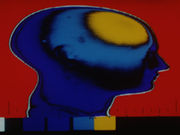Transcranial magnetic stimulation could help discern Alzheimer’s from frontotemporal dementia
THURSDAY, July 27, 2017 (HealthDay News) — Distinguishing Alzheimer’s disease (AD) from frontotemporal dementia (FTD) may get easier using a transcranial magnetic stimulation (TMS) approach, according to a study published online July 26 in Neurology.
Barbara Borroni, M.D., of the University of Brescia in Italy, and colleagues tested paired-pulse TMS in 79 individuals with probable AD, 64 people with probable FTD, and 32 healthy controls (HC).
The researchers found that AD mainly affected short-latency afferent inhibition, while FTD mainly affected short-interval intracortical inhibition and facilitation intracortical circuits. Using TMS, the research team said they differentiated FTD from AD with a sensitivity of 91.8 percent and specificity of 88.6 percent, AD from HC with a sensitivity of 84.8 percent and specificity of 90.6 percent, and FTD from HC with a sensitivity of 90.2 percent and specificity of 78.1 percent.
“Current methods can be expensive brain scans or invasive lumbar punctures involving a needle inserted in the spine, so it’s exciting that we may be able to make the diagnosis quickly and easily with this noninvasive procedure,” Borroni said in a journal news release. “If our results can be replicated with larger studies, this will be very exciting. Doctors might soon be able to quickly and easily diagnose frontotemporal dementia with this noninvasive procedure.”
Copyright © 2017 HealthDay. All rights reserved.








